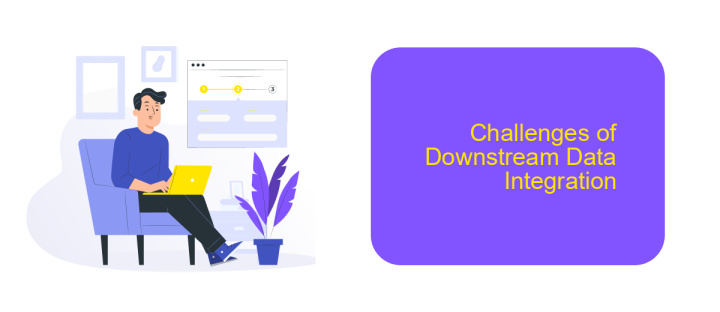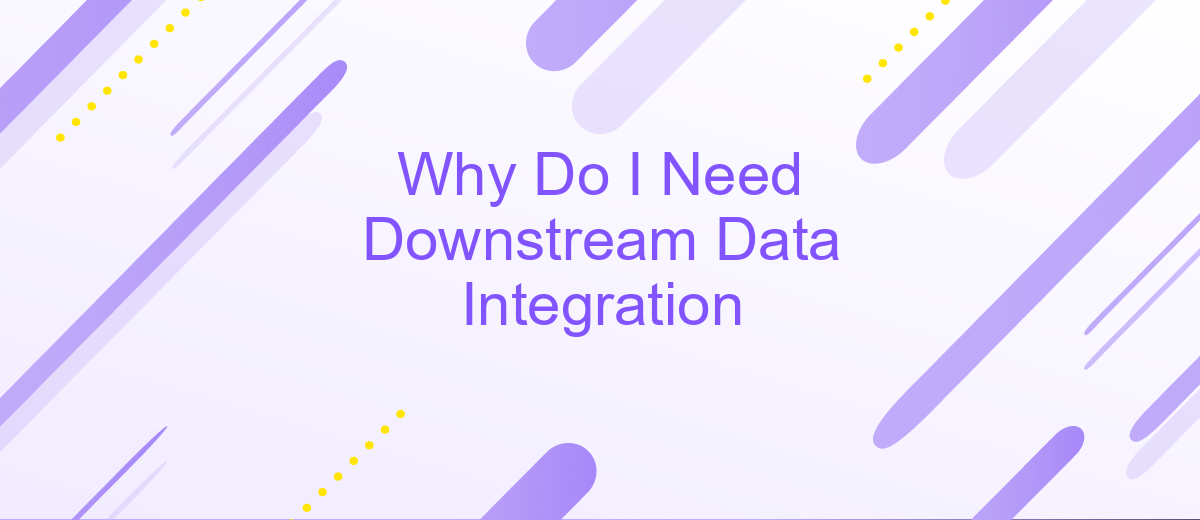Why Do I Need Downstream Data Integration
In today's data-driven world, downstream data integration is crucial for businesses looking to leverage their data effectively. By ensuring seamless data flow from various sources to end-users, organizations can make informed decisions, enhance operational efficiency, and maintain a competitive edge. This article explores the importance of downstream data integration and how it can transform your business operations.
Introduction
In today's data-driven world, the ability to integrate downstream data efficiently is crucial for businesses aiming to stay competitive. Downstream data integration involves the consolidation of data from various sources into a unified system, enabling seamless access and analysis. This process not only enhances data accuracy but also ensures that critical information is readily available for decision-making.
- Improved data quality and consistency
- Enhanced decision-making capabilities
- Streamlined business processes
- Increased operational efficiency
One effective way to achieve downstream data integration is by leveraging integration services like ApiX-Drive. ApiX-Drive simplifies the process by connecting various applications and automating data transfer, reducing the need for manual intervention. By utilizing such services, businesses can ensure that their data is always up-to-date, accurate, and accessible, ultimately driving better business outcomes.
Benefits of Downstream Data Integration

Downstream data integration offers numerous benefits, including enhanced data accuracy and consistency. By integrating data from various sources, businesses can eliminate data silos and ensure that all departments have access to the same, up-to-date information. This leads to improved decision-making processes as stakeholders can rely on comprehensive and accurate data. Moreover, it reduces the risk of errors that often occur when data is manually transferred between systems.
Another significant advantage is the increase in operational efficiency. Automated data integration processes save time and resources that would otherwise be spent on manual data entry and reconciliation. Services like ApiX-Drive facilitate seamless integration between different applications and data sources, allowing businesses to streamline their workflows and focus on core activities. Additionally, real-time data integration enables quicker response times to market changes and customer needs, giving companies a competitive edge.
Use Cases for Downstream Data Integration

Downstream data integration is crucial for businesses looking to optimize their data workflows and ensure seamless information transfer across various systems. This integration allows for the efficient handling of data from multiple sources, improving decision-making and operational efficiency.
- Customer Relationship Management (CRM): Integrating downstream data into CRM systems helps in creating a unified customer profile, enhancing customer service, and personalizing marketing efforts.
- Supply Chain Management: By integrating data from suppliers, manufacturers, and distributors, businesses can streamline their supply chain operations, reduce costs, and improve inventory management.
- Financial Reporting: Downstream data integration facilitates accurate and timely financial reporting by consolidating data from various financial systems, ensuring compliance and better financial planning.
- Marketing Automation: Integrating downstream data into marketing platforms enables targeted campaigns, performance tracking, and ROI analysis, leading to more effective marketing strategies.
Services like ApiX-Drive simplify the process of downstream data integration by providing a user-friendly interface and automating the data transfer between different applications. This ensures that businesses can focus on their core activities while maintaining an efficient and integrated data ecosystem.
Challenges of Downstream Data Integration

Downstream data integration poses several challenges that organizations need to address to ensure seamless data flow and utilization. One of the primary issues is data consistency. As data moves through various systems, ensuring that it remains accurate and unaltered is crucial.
Another significant challenge is data latency. Real-time data integration is often required for timely decision-making, but latency can hinder this process, leading to outdated or irrelevant information being used in critical business operations.
- Data Consistency: Maintaining accuracy and preventing data corruption.
- Data Latency: Ensuring real-time data flow for timely decisions.
- Complexity: Integrating diverse data sources and formats.
- Scalability: Handling increasing data volumes efficiently.
- Security: Protecting data during transfer and integration.
To mitigate these challenges, leveraging tools like ApiX-Drive can be beneficial. ApiX-Drive offers automated data integration solutions that ensure data consistency, reduce latency, and simplify the integration process. By using such services, organizations can achieve more reliable and efficient downstream data integration.
- Automate the work of an online store or landing
- Empower through integration
- Don't spend money on programmers and integrators
- Save time by automating routine tasks
Future of Downstream Data Integration
The future of downstream data integration is poised to be transformative, driven by advancements in artificial intelligence and machine learning. These technologies will enable more sophisticated data processing, allowing for real-time analytics and more accurate predictive modeling. As businesses increasingly rely on data-driven decisions, the need for seamless and efficient data integration will only grow. Tools like ApiX-Drive are already making significant strides in this area, offering automated data transfer and integration solutions that reduce manual effort and minimize errors.
Moreover, the rise of cloud computing and the Internet of Things (IoT) will further revolutionize downstream data integration. With more devices generating data, the challenge will be to integrate this vast amount of information in a coherent and useful manner. ApiX-Drive and similar platforms will play a critical role by providing scalable and flexible integration services. Looking ahead, we can expect to see more user-friendly interfaces and enhanced security measures, ensuring that data integration is not only efficient but also secure and accessible to all types of businesses.
FAQ
What is downstream data integration?
Why is downstream data integration important for my business?
How can downstream data integration improve operational efficiency?
What challenges might I face with downstream data integration?
Are there tools to help with downstream data integration?
Time is the most valuable resource for business today. Almost half of it is wasted on routine tasks. Your employees are constantly forced to perform monotonous tasks that are difficult to classify as important and specialized. You can leave everything as it is by hiring additional employees, or you can automate most of the business processes using the ApiX-Drive online connector to get rid of unnecessary time and money expenses once and for all. The choice is yours!


